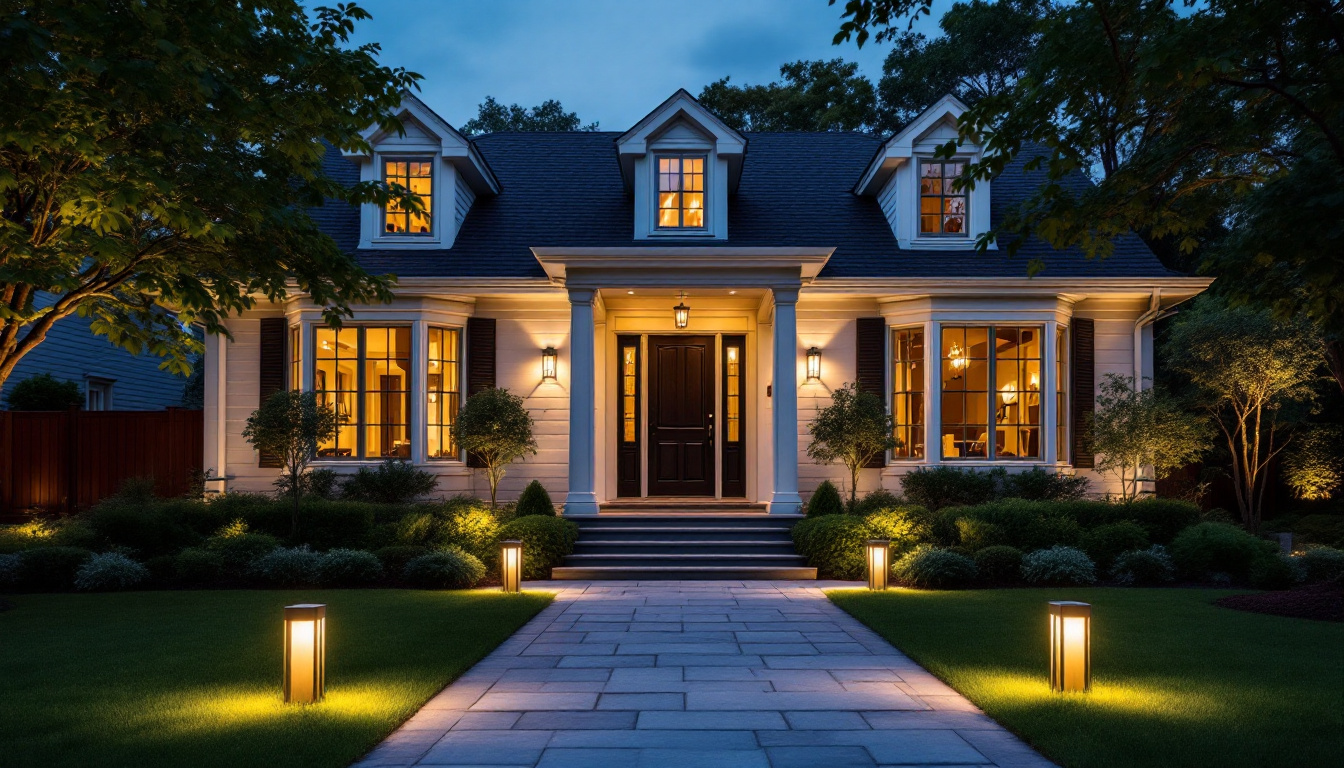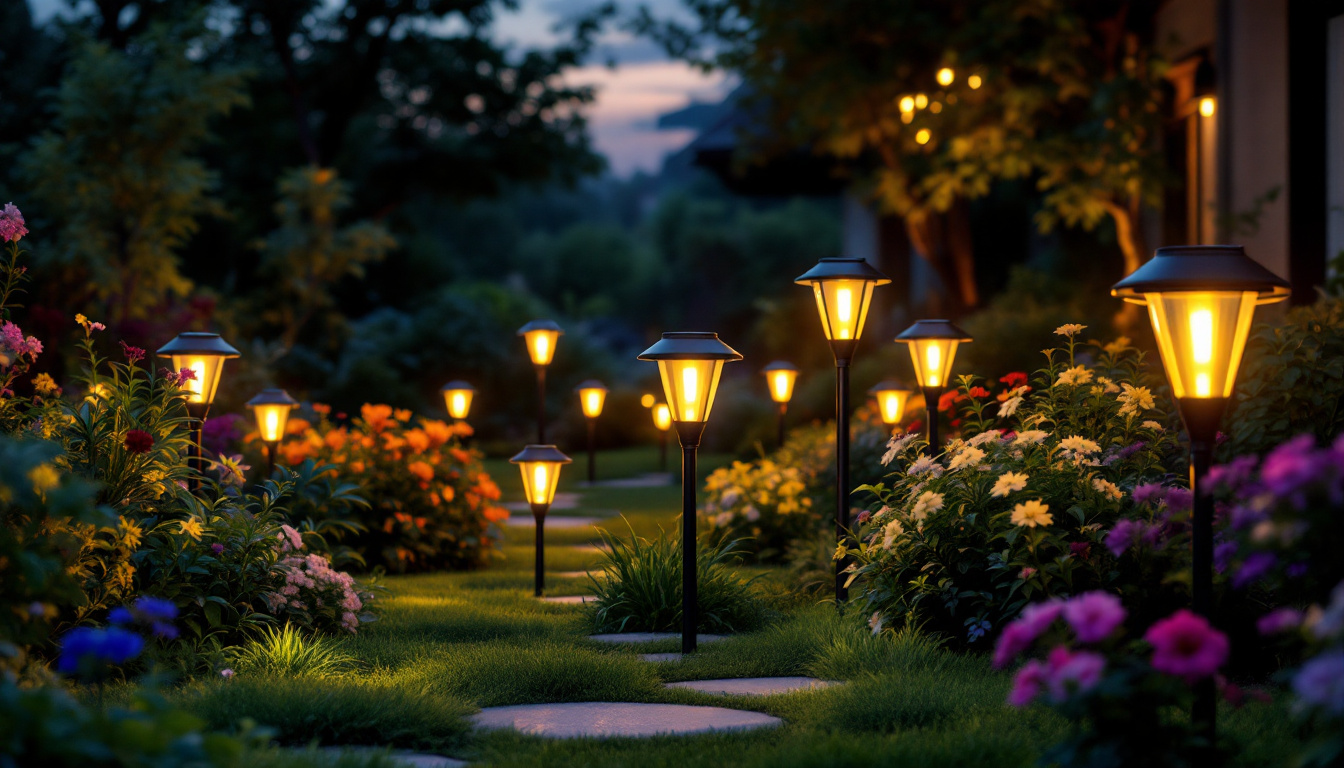
Lighting for the outside of a house plays a crucial role in enhancing aesthetics, ensuring safety, and providing functionality. For lighting contractors, understanding the science behind outdoor lighting is essential for creating effective designs that meet client needs. This article delves into the principles of outdoor lighting, the types of fixtures available, and the best practices for implementation.
Outdoor lighting serves multiple purposes, ranging from security to enhancing the architectural beauty of a property. It can transform a mundane exterior into a captivating space, inviting homeowners and guests to enjoy the outdoors even after sunset.
Moreover, well-designed outdoor lighting can deter criminal activity by eliminating dark areas where intruders might hide. It also plays a vital role in guiding visitors safely along pathways and driveways, reducing the risk of accidents.
One of the primary reasons homeowners invest in outdoor lighting is to enhance the visual appeal of their property. Properly placed lights can highlight architectural features, landscaping, and outdoor living spaces.
Using techniques such as uplighting and downlighting, contractors can create dramatic effects that bring out the beauty of a home’s exterior. The interplay of light and shadow can add depth and texture, making the space more inviting. Additionally, incorporating color-changing LED lights can provide versatility, allowing homeowners to adjust the mood of their outdoor space for different occasions, from festive gatherings to quiet evenings under the stars.
Safety is another significant factor in outdoor lighting design. Well-lit pathways, staircases, and entryways help prevent accidents and ensure that guests can navigate the property with ease.
In addition to improving safety, outdoor lighting can also provide a sense of security. Illuminating dark areas around a home can deter potential intruders, making it less likely for them to approach the property. Furthermore, integrating motion-sensor lights can enhance this security aspect, as they automatically illuminate when movement is detected, startling any unwanted visitors and alerting homeowners to potential threats. This combination of aesthetic enhancement and security measures makes outdoor lighting an essential investment for any property owner.
When selecting outdoor lighting, it is crucial to understand the different types of light sources available and their specific applications. Each type of light has its unique characteristics, which can influence the overall effectiveness of the lighting design.
Incandescent bulbs have been a popular choice for outdoor lighting due to their warm color temperature and affordability. However, they are not the most energy-efficient option, as they consume more electricity and have a shorter lifespan compared to other types.
Despite these drawbacks, incandescent lights can create a cozy and inviting atmosphere, making them suitable for areas where ambiance is a priority, such as patios and outdoor dining spaces. Their ability to render colors beautifully also makes them a favorite for decorative applications, such as string lights or lanterns that enhance the aesthetic appeal of gardens and walkways. Additionally, the warm glow of incandescent bulbs can evoke a sense of nostalgia, often reminding people of simpler times spent outdoors with family and friends.
LED lights have gained immense popularity in recent years due to their energy efficiency and longevity. They consume significantly less power than incandescent bulbs and can last up to 25 times longer.
Additionally, LED lights are available in various color temperatures, allowing contractors to customize the lighting design to suit the homeowner’s preferences. Their versatility makes them ideal for a wide range of applications, from accent lighting to security fixtures. Furthermore, advancements in LED technology have led to the development of smart LED systems that can be controlled remotely, enabling users to adjust brightness and color from their smartphones. This level of control not only enhances convenience but also allows for dynamic lighting schemes that can change with the seasons or special occasions, adding a modern touch to outdoor spaces.
Solar lights are an eco-friendly option for outdoor lighting, harnessing energy from the sun to power themselves. They are easy to install, require no wiring, and can be placed in remote areas where electricity is not available.
While solar lights can be a cost-effective solution, their performance can be affected by weather conditions and the amount of sunlight received. Therefore, it is essential to assess the location and intended use before recommending solar lighting to clients. Additionally, many solar lights now come equipped with motion sensors and automatic dusk-to-dawn features, which not only enhance security but also contribute to energy savings by ensuring that lights are only activated when needed. As technology continues to improve, solar lighting options are becoming more sophisticated, with some models even incorporating LED technology for brighter illumination and longer-lasting performance, making them a viable choice for both residential and commercial applications.
Designing effective outdoor lighting involves more than just choosing the right fixtures. Understanding key principles can help contractors create a cohesive and functional lighting plan that meets the needs of the homeowner.
A successful outdoor lighting design typically incorporates five layers: ambient, task, accent, decorative, and security lighting. Each layer serves a specific purpose and contributes to the overall effectiveness of the lighting scheme.
Light distribution refers to how light is spread across a given area. Different fixtures provide varying beam angles, which can significantly impact the effectiveness of the lighting design.
Contractors must consider the intended use of each area when selecting fixtures. For example, wider beam angles are suitable for general illumination, while narrow beams are ideal for accent lighting. Understanding these principles can help create a balanced and functional lighting scheme.
Color temperature, measured in Kelvin (K), affects the mood and atmosphere of outdoor spaces. Warmer color temperatures (around 2700K to 3000K) create a cozy and inviting ambiance, while cooler temperatures (above 4000K) can feel more sterile and harsh.
Choosing the right color temperature is essential for achieving the desired effect. For instance, warm lights are often preferred for residential outdoor areas, while cooler lights may be more suitable for commercial properties or security applications.
Successful outdoor lighting installation requires careful planning and execution. Following best practices can help ensure that the lighting design is both effective and aesthetically pleasing.
Before installation, it is crucial to plan the layout of the lighting system. This involves assessing the property, identifying key areas that require illumination, and determining the appropriate fixtures for each location.
Creating a lighting plan can help visualize how different elements will work together. It is essential to consider the overall design of the property and how the lighting will enhance its features.
The placement of fixtures is critical to achieving the desired lighting effect. Fixtures should be positioned to minimize glare and shadows while maximizing visibility.
For pathway lighting, fixtures should be spaced evenly to provide consistent illumination. Uplights used to accent trees or architectural features should be placed at the base of the object, angled upward to create a dramatic effect.
Incorporating smart technology into outdoor lighting designs can enhance functionality and convenience. Smart lighting systems allow homeowners to control their outdoor lights remotely, adjust brightness levels, and set schedules for when lights should turn on and off.
These systems can also integrate with security features, providing added peace of mind for homeowners. For contractors, offering smart lighting solutions can set them apart in a competitive market.
Homeowners should be encouraged to inspect their outdoor lighting fixtures periodically. This includes checking for burnt-out bulbs, cleaning fixtures to remove dirt and debris, and ensuring that wiring is intact and free from damage.
Additionally, seasonal maintenance is recommended, especially in areas prone to harsh weather conditions. This may involve securing fixtures, adjusting angles, and replacing any damaged components.
Outdoor lighting systems can encounter various issues, such as flickering lights, inconsistent brightness, or complete failure. Understanding these problems can help contractors provide effective solutions.
For instance, flickering lights may indicate a loose connection or a faulty bulb, while inconsistent brightness could result from voltage fluctuations. Educating homeowners about these potential issues can help them troubleshoot effectively and know when to call for professional assistance.
Understanding the science behind outdoor lighting is essential for lighting contractors looking to create effective and aesthetically pleasing designs. By considering the various types of light sources, design principles, and best practices for installation and maintenance, contractors can deliver exceptional results that meet the needs of their clients.
As outdoor living spaces continue to gain popularity, the demand for innovative and efficient lighting solutions will only increase. By staying informed about the latest trends and technologies in outdoor lighting, contractors can position themselves as leaders in the field, providing exceptional service and expertise to homeowners.
Ready to elevate your outdoor lighting projects with the highest quality fixtures at the best value? Look no further than LumenWholesale. Our extensive selection of spec-grade lighting products ensures that you can bring your designs to life while staying within budget. Say goodbye to local distributor markups and hello to unbeatable wholesale prices, free shipping, and the convenience of hassle-free bulk buying. Don’t compromise on quality or cost. Visit LumenWholesale today and discover the perfect lighting solutions for your next outdoor project.

Discover how pigtail lights are revolutionizing the lighting industry and boosting contractors’ profits.

Discover the essentials of outdoor solar garden lights compliance with our comprehensive guide for lighting contractors.

Discover essential tips for lighting contractors to avoid common pitfalls when dealing with tanning lamps and beds.

Explore the intricacies of fan pricing with insights into the most common questions lighting contractors have.